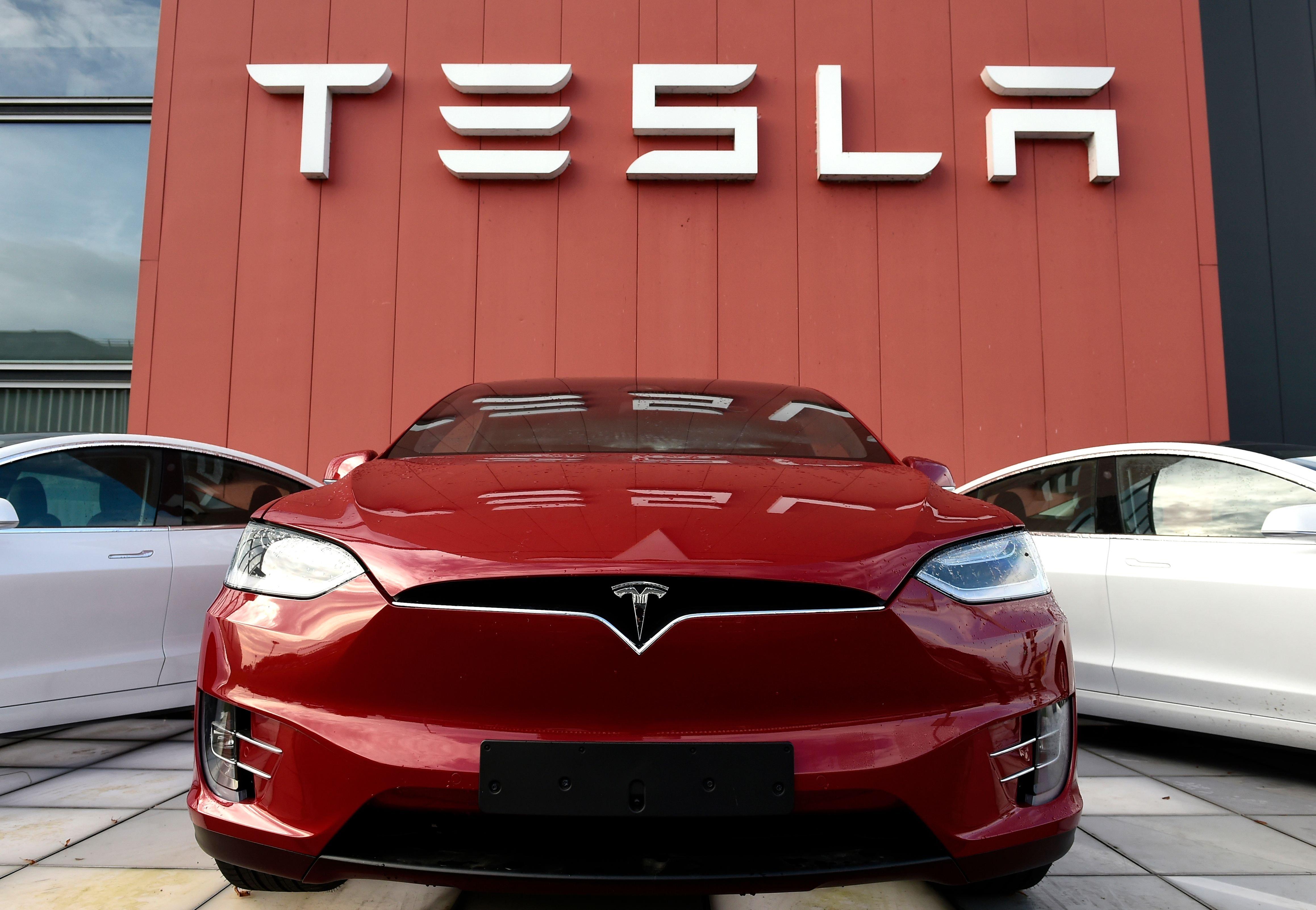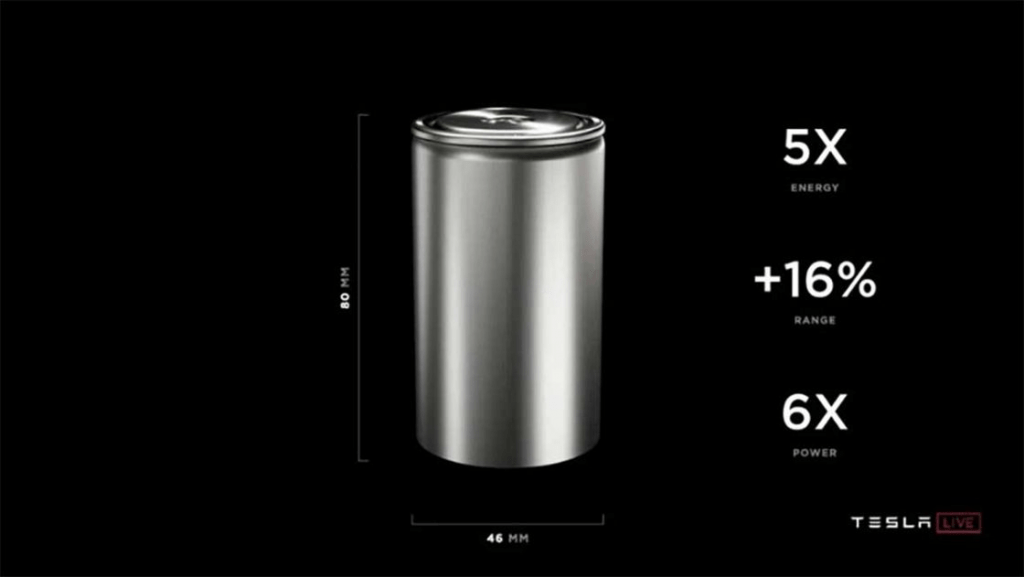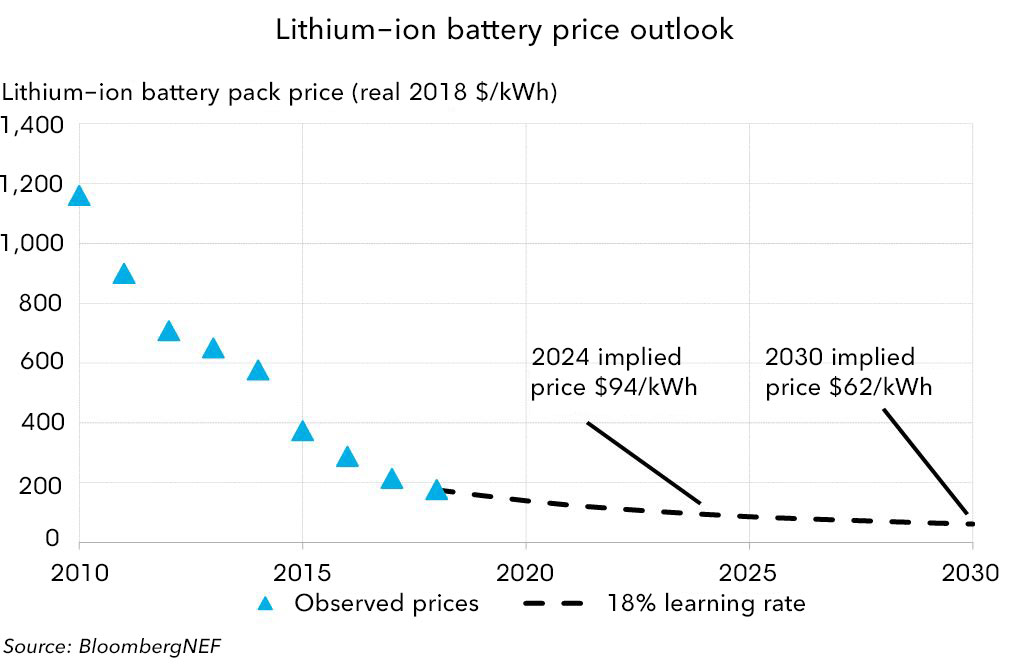The electric vehicle industry is on the cusp of a watershed moment as companies like Tesla redouble their efforts to perfect battery technology and ramp up production capabilities of more affordable vehicles.
Tesla Lays out Vision at ‘Battery Day’
Tesla held their much anticipated “Battery Day” on September 22, following the company’s quarterly shareholders’ meeting. At the event, Elon Musk laid out the company’s plans to usher in a new generation of electric vehicle batteries that will be more powerful, longer lasting, and lead to significant overall cost savings for future buyers of Tesla vehicles.
One of the biggest takeaways from Tesla’s Battery Day is that the company is totally overhauling the design of the lithium-ion battery. The newly designed cylindrical batteries will be 6 times more powerful than present-day batteries, store 5 times more energy, and increase driving range by 16%.
The interior of the newly designed batteries resembles a fruit roll-up of sorts, as the traditional “tab” lithium-ion battery design is replaced in favor of a tightly packed jellyroll containing both the positive and negative electrodes of the battery. The rolled-up design cuts down on the distance that the electrons have to travel, helping to achieve improved efficiencies. The new tabless batteries are dubbed the “4680 battery,” a reference to its larger dimensions (46 mm diameter and 80 mm height) that allow for the aforementioned increase in energy storage and power gains.
In addition to the battery re-design, Musk and his team are aggressively going after battery cost reductions by eliminating one of the most expensive components of the battery – cobalt – in favor of nickel cathodes. The cost reductions achieved by virtually eliminating the need for cobalt also come with ancillary benefits of improved sustainability. For example, while new nickel material will be required in initial production, Tesla will eventually focus on recycling nickel from existing batteries thereby reducing the need to mine for precious metals. Cobalt is also toxic, and the fewer toxic materials being mined and processed around the world the better for all of us.
Cheaper Batteries = Cheaper Cars
The ultimate end game to revamping lithium-ion battery technology and cutting battery costs is of course to pass on these cost savings to the consumer in the form of a much more affordable vehicle. Tesla’s battery redesign allows the company to optimize the basic structure of a vehicle’s frame, leading to a lighter vehicle that relies on far fewer moving parts.
The combined redesign of both the new battery and the new structural elements of the vehicle will slash Tesla’s production cost per kWh by 56%. This monumental achievement opens up the door to a whole new generation of low-cost electric vehicle that can be brought to the market, and that’s exactly what Elon Musk has in mind.
Musk frequently highlights the connectedness between Tesla’s ‘trifecta’ of sustainability-focused business lines. Using mass produced cheaper batteries to drive down electric vehicle costs is the next frontier in global sustainability. As Musk stated at Battery Day:
“The three parts of a sustainable energy future are sustainable energy generation, storage, and electric vehicles…we intend to play a significant role in all three. So to accelerate the transition to sustainable energy, we must produce more EVs that need to be affordable and a lot more energy storage, while building factories faster and with far less investment.”
The new battery technologies that Tesla is pursuing will allow for the company to roll out a $25,000 fully autonomous electric vehicle to the market in just 3 years’ time. Musk later confirmed on Twitter that Tesla will be producing a brand-new line of vehicle at the $25,000 price point rather than offering the option for one of their existing vehicles.
We aren’t cutting the price of Model 3 to $25k. I was referring to a future car that will be smaller than Model 3.
— Elon Musk (@elonmusk) September 28, 2020
Tesla’s plan would obviously turn the automobile industry on its head. Up to this point, Tesla has been firmly entrenched as a luxury car maker that produces a product outside the reach of your average American consumer. A more affordable vehicle would be good for Tesla’s bottom line as it opens the door to tens of millions of new prospective customers based on price alone, but more importantly, this is just the type of groundbreaking development that would meaningfully accelerate the global transition to sustainable energy.
The Bigger Picture
Tesla’s new battery technology and affordable car production goals underscore a growing inevitability that is apparent to even casual observers of the automobile industry – the days of the internal combustion engine are numbered.
Even before Tesla held its Battery Day and unveiled its 3-year benchmark for rolling out a more affordable vehicle, industry analysts were already throwing out a similar timeline for electric vehicles to surpass their gas guzzling peers when it comes to economic feasibility. As Aakash Arora of the Boston Consulting Group put it in early September:
“Three years from now, there will be no debate that buying a gasoline car is an economically worse decision than buying an electric car.”
Far from a pie-in-the-sky vision, this projection actually jives with other electric vehicle industry forecasts made years ago. An analysis by Morgan Stanley and Bloomberg New Energy Finance (NEF) in 2017 projected that “EVs will be cheaper to buy than internal combustion engine (ICE) cars in most countries by 2025-29.”
Lithium-ion battery prices have plummeted in recent years from about $1,100/kWh in 2010 to about $150/kWh in 2019 – a drop of over 85%. A price of $100/kWh has long been viewed as the “holy grail” for the industry and the potential inflection point at which electric vehicles would roughly be at price parity with gas-powered ones.
It is worth noting that the topline price comparisons between electric vehicles and gas-powered vehicles fails to account for the immense lifetime savings that electric vehicles afford to their owners. According to the AAA, a large gas-powered sedan will have an all-in operating cost (fuel, maintenance, repairs) of 22.26 cents per mile, which works out to about $3,400 annually for a car driven 15,000 miles. The economics of lifetime car ownership are a no-brainer when compared to a Tesla that requires no fuel and has a fraction of the internal moving parts that are the source of most car repairs.
The phasing out of the gasoline-powered personal vehicle represents arguably the most impactful – and achievable – change to human behavior that can meaningfully address the effects of climate change.
A study conducted by researchers at Northwestern University that was released just last month shows just how dramatic the economic, social, environmental, and health benefits would be in a world populated by more electric vehicles and less gas-powered ones. According to the report, if just 25% of combustion-engine vehicles in the U.S. were replaced by electric vehicles, then the U.S. would save almost $17B annually in reduced damages from climate change and air pollution. Using 2014 emissions data and the same year’s energy generation infrastructure, the researchers found that a 25% adoption rate of electric vehicles in the U.S. would have reduced carbon emissions by 250 million tons. There are over 1 billion passenger vehicles in operation around the world, yet less than 5 million of them are electric, so the room for growth is immense.
The battery innovations that Tesla is pursuing and the promise of a new $25,000 electric vehicle in the next 3 years are significant developments in what is still a nascent industry. While the U.S. government has dragged its feet in combating the effects of climate change in recent years, Tesla and other private companies have stepped into the void. Not only are Tesla’s innovations exciting to follow, but they may quite literally be the key to reversing the effects of climate change in the shortest amount of time. We should all be thankful for their unwavering commitment to sustainability.
Cover Photo Source: Mercury News










